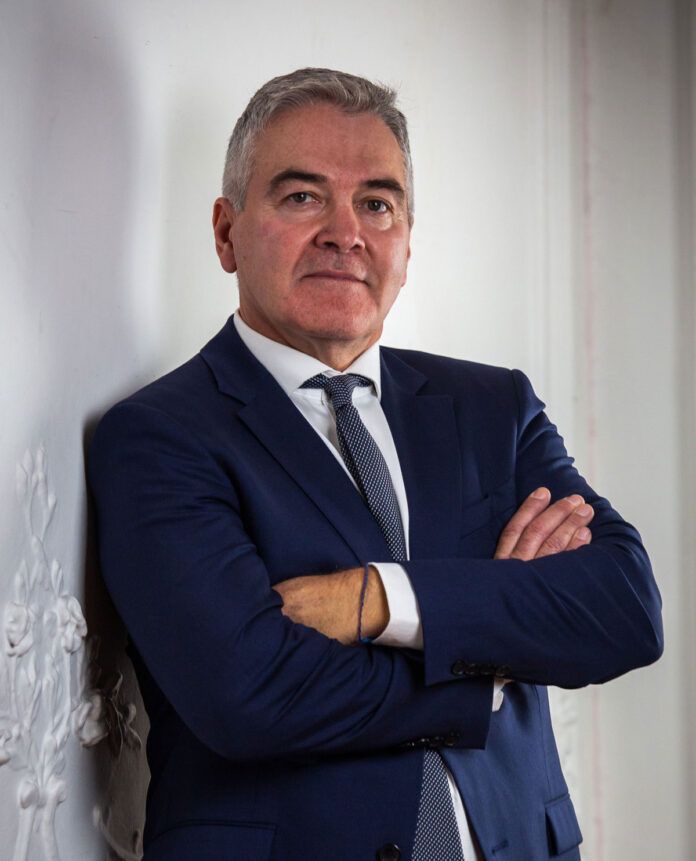CHULA VISTA MAYORAL CANDIDATE RUDY RAMIREZ
Rudy Ramirez is running for mayor, a seat being vacated by Chula Vista Mayor Mary Casillas Salas. The 61-year-old Democrat is running in the nonpartisan race and said he is concerned about the partisanship that is infiltrating City Hall because he believes it only brings division politics which is not what municipal government is about.
“Municipal government is about basic services to neighborhoods,” he said. “Partisan politics wants to creep in, but we should all work hard to keep it at bay because it is too full of special interests.”
Ramirez is a life-long Chula Vistan and became involved in politics soon after college when he started his small business on Main Street.
“I was in the metal fabrication business for almost 30 years,” he said. “I became involved in politics representing small business interests along Main Street. At the time, Chula Vista had just annexed the Montgomery area, and we were being harassed, like some type of mild gentrification happening there for some of us older businesses. I became a spokesman for the group and became a thorn inside City Hall, so much so that after we were done defending the interests of small businesses on Main Street Chula Vista, they asked me to be part of the General Plan Update Steering Committee, representing Chula Vista small businesses.”
Ramirez said with this he learned about land use, he served on several boards and commissions, and then was elected to City Council in 2006 and served through 2014, during the Great Recession.
“Even under very difficult economic circumstances, we got a lot done,” he said. “We had a hard working group led by mayor Cheryl Cox and some other dynamic council members. We acquired the land for the university. We tore down the power plant on the bayfront. We entitled the bayfront development. We laid the groundwork for that project to go forward. It was an extremely difficult thing to do. No one had been able to do that for over 30 years. But even under difficult financial circumstances, we worked hard as a team and did that. That is one of things that is lacking now. Our city government has turned into more of an obstacle for jobs and bringing them into Chula Vista.”
Ramirez said that needs to change and believes that City Hall has neglected the neighborhoods.
“Different neighborhoods have different issues, but on the west side, and creeping into the east side, we have a serious problem with homelessness,” he said. “We need to address it head on, addressing the humanitarian concerns, while at the same time we are protecting neighborhoods and the degradation that comes from the effects of homelessness.”
Ramirez said the city needs to start enforcing camping laws, petty crime laws, and large camps in west Chula Vista need to be cleaned up.
“We need to bring our public safety staffing up to standards,” he said. “We are 45 police officers short right now, despite the fact that we have new taxes to pay for those services. The city has not done a very good job in doing all those things. Mainly through economic development, will help us pay for some of the services that we want. They are really good at taxing, not so good getting services that should come from those new taxes.”
Ramirez said he plans to work on this, so City Hall can face the taxpayer, and tell them honestly that they are doing the best they can with the resources with which they are entrusted.
Ramirez said he opposed the proposed psychiatric hospital on the east side but favored it on the Scripps campus in some of those corridors that need to be activated. Where there is transit, and additional housing is needed, at the same time, protecting residential neighborhoods.
“With that kind of growth, we will get as we urbanize, we need to make sure that we are bringing our community along,” he said. “The sort of development that fits with the existing community. That means enforcing parking regulations, so we have a quality neighborhood, pick up trash. It is incredible the amount of trash and old mattresses and couches that you see littered across our city. Graffiti. All those issues are just basic to municipal government, and it seems that city government has not been able to get to them in any discernable way.”
Ramirez said these are the types of quality of life issues, as the city grows, that need to be addressed. But he said that there are some incredible opportunities coming for the city.
“Chula Vista is not yet built out and we have incredible opportunities with the university site, starting with the innovation district bringing along an educational institution with that,” he said.
Ramirez said the city’s landfill has been in the public eye since the Republic Waste strike and many Chula Vista residents became aware of is that the city owns 50 acres of land at the landfill that could be used for many innovative projects.
“Projects to do with trash. The trash to energy movement is growing throughout the world. Chula Vista can be a leader in that arena here just with the fact we have a landfill in the middle of our community,” he said. “Nobody really wants a landfill, but now that we have one, let’s make the best of it. Let us turn that into an opportunity for jobs. We need to capture that now before we are built out, or we will perpetually be a housing community with an unstainable model to bring us all the services that we want as residents.”
Ramirez said his experience in the private and public sector, he can find the best ways to create incentives and create jobs for Chula Vista.
“The jobs, housing balance needs to be addressed now before it is too late,” he said. Ramirez said decisions need to be made for the “softer services” that the city provides like parks and recreation.
“We know that developers are required to build part of this infrastructure as they build homes,” he said. “The problem is that the city does not have resources to maintain them, water them, to run programs out of them. We need to start thinking in terms of public/private partnerships.”
Ramirez said this includes building tournament capacity fields and facilities in Chula Vista that could be an engine for economic development and for sports tourism.
“We have tremendous assets in our community for trails,” he said. “We have some of the best mountain biking trails in the entire county, and we need to build on those assets. Pickleball is huge now. We have the ability to build those facilities to host large-scale tournaments that will be a financial model for our city.”
Ramirez said with the bayfront project moving now, he is aware about the possible gentrification of the west side of Chula Vista.
“I am aware of the dangers of that,” he said. “I believe that if it is done right and done with the support and blessing of the existing neighborhoods in western Chula Vista, we can develop those commercial corridors where we bring in more affordable opportunities for young families and housing. For purchase and for rent housing. But we need to be able to do it right. At the same time, we need to be able to preserve our community character.”
Ramirez said are models for doing that.
“If we start early and plan it right, and we work at it, we will be able to achieve that balance,” he said. “In my point of view, we are already late. Chula Vista and the existing city government should already be planning for that. There should be a robust plan on how west Chula Vista is going to develop. The bayfront will surely be an economic engine for western Chula Vista. We need to create those linkages as more visitors come into Chula Vista and capture that for the benefit of western Chula Vista and the economic activity it will incentivize. There is no plan now. So, on day one, the first 90 days, we will begin developing that plan through robust civic engagement so we can understand the concerns of the neighborhood and address them.”















